How to reanimate an orchid if the roots have rotted?
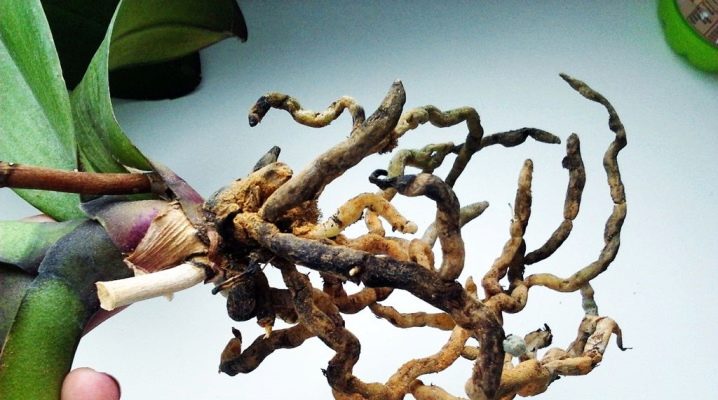
With improper care, the orchid can begin to rot, which, of course, upsets the grower. But you can still help the plant if you navigate in time and organize the formation of new roots.
What do healthy roots look like?
The roots are the basis of any plant, since through them it absorbs water and nutrients, without which the orchid cannot grow and bloom.
The roots, when healthy and have sufficient moisture, have an attractive green color.
Dry roots usually have a silvery or white tint.
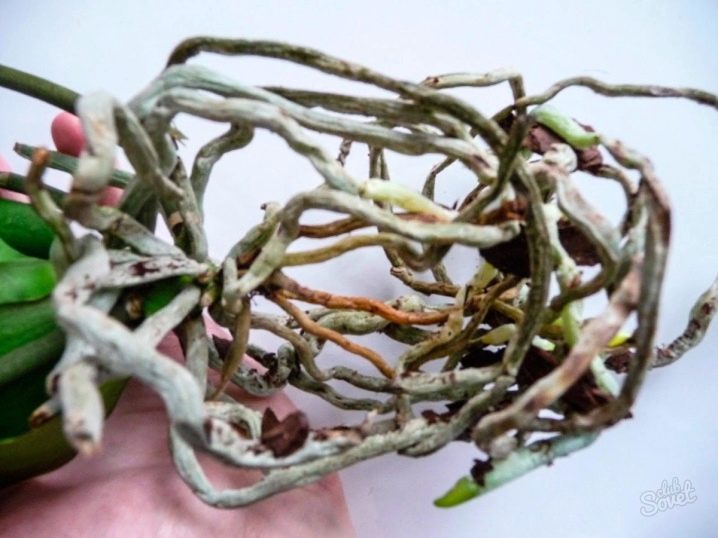
Rotten roots lose their density, become soft, and their color is brown. At a certain point, the stage of decay begins, when an unpleasant smell, mucus appears. After purchase, it is imperative to inspect the root system, remove damaged ones with a disinfected tool. The cut points are treated with a charcoal solution or sprinkled with crushed activated carbon powder.
Root rot can lead to further mold growth, which easily spreads to nearby roots and slowly kills the plant.
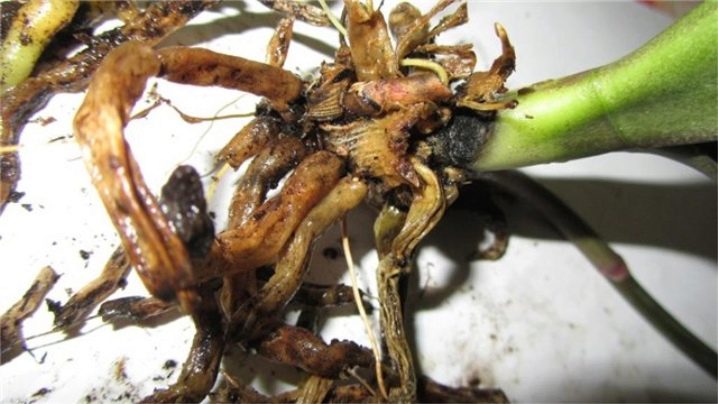
Signs of decay
When the roots of an orchid rot, they not only change color, but also acquire an unpleasant odor. There are other signs by which one can understand that the system, hidden in the substrate, is gradually becoming unusable.
All signs can be distinguished as follows:
- change of shade;
- the appearance of oozing fluid when pressed;
- weeping areas appeared;
- thin roots that should be firm and thick when healthy.
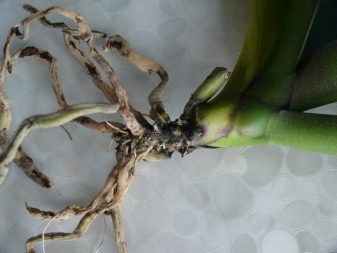
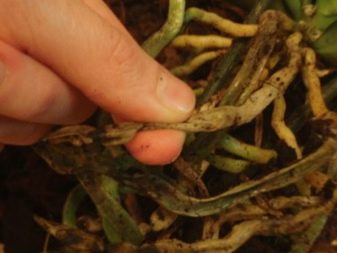
If there is a suspicion that the roots are rotting, it is necessary to check the center of the plant. If it is discolored or brown, and the base of the leaves is discolored, then there is reason to worry about the appearance of root rot... In nature, orchids are well blown by air masses, and since they are placed in pots at home, they become more susceptible to disease.
As soon as the process of defeat has begun, the plant stops producing buds, buds for peduncles. If a grower has noticed signs of decay - unhealthy looking leaves, buds, or stem - and cannot control or eliminate the infection, removal of the plant should be considered. But it is better, of course, to understand the reasons and try to save the orchid. Often, even with a completely rotted root system, this can be done, although it will take a while to move the flower to quarantine.
Causes
Damage to the root system often occurs because before that it was simply flooded with water. This is a common mistake of novice florists who think that excess moisture will only benefit a tropical flower. Wet and waterlogged substrate are two different things.... Root rot makes the roots brown and soft, and nutrients are no longer delivered to the plant through its food system, which is almost certainly a death sentence for an orchid.
To avoid this problem, it is necessary to choose the right pot with good drainage.
With such a system, the roots will remain hydrated, but excess moisture will go away. When the first signs of decay appear, the roots must be removed immediately, since the spreading rate is very high.
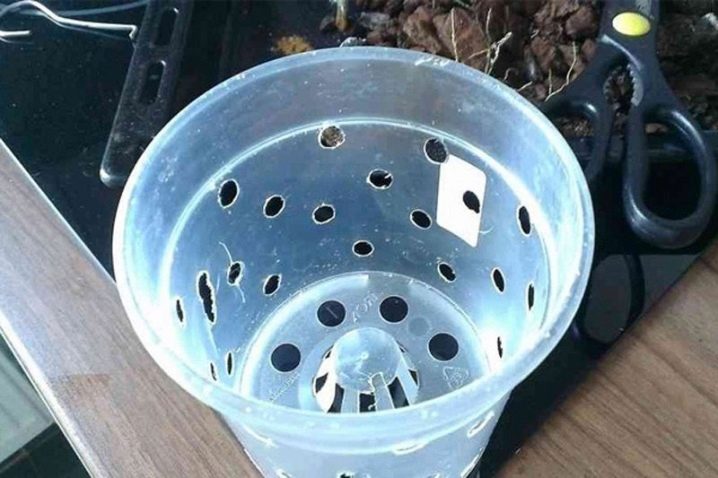
Too much water prevents oxygen from penetrating to the roots, hence the unfavorable processes. Leaves will begin to slow down, new ones will appear pleated, and existing leaves will turn yellow.
Resuscitation methods
If something goes wrong, you can always revive the orchid. Transplantation and treatment from decay, pruning of damaged parts leads to positive results.
And then you need to take a number of measures to prevent further blackening of the roots.
- Make sure the orchid is in a pot with good drainage.
- Organize a clear watering regime.
- The leaves of some types of orchids act like a water siphon, which can trap water in the base. Make sure that after watering the flower, all excess moisture is absorbed into the paper towel.
- There should always be air movement around the flower. Blowing can be done by a fan, air conditioner, or you just need to constantly ventilate the room through a window.
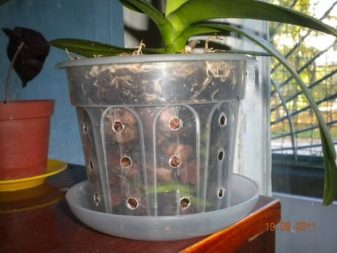
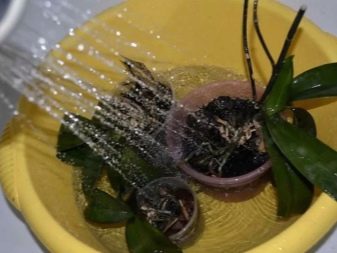
Rot can be treated with hydrogen peroxide, which is poured onto the crown of the orchid.... The procedure is repeated every 2-3 days until the product stops hissing. Then sprinkle with cinnamon, which is a natural fungicide against fungus.
While maintaining viable roots, the orchid can be fully restored. To do this, remove the roots from the pot and clean them with a brush. The scissor blades are dipped in alcohol for sterilization, and then they cut off the roots infected with rot. Drain the standing water in a drain pan, thoroughly rinse the container and tray in soapy water.
Change the substrate to a new one, slightly moisten it with clean water without bleach... Allow excess liquid to drain. Place the roots of the orchid in a pot, add extra bark around to anchor the plant. Place the container on the drainage tray.
The next watering is done only when the top few centimeters of the soil is completely dry. Stagnant water must not be allowed to remain at the bottom.
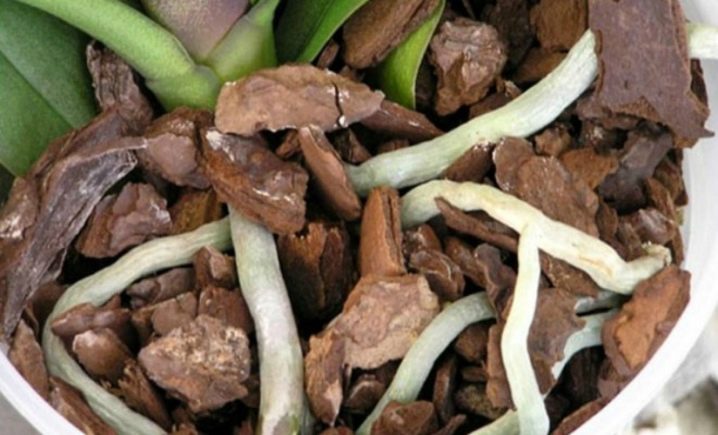
Most of it rotted away
You can save a flower even when most of the root system is damaged. Cutting decaying roots will restore the health of the plant.
The process is as follows step by step.
- Pour 9 parts warm water and 1 part bleach into a container. Stir the solution with a spoon, lower the cutting tool into the liquid for 20-30 seconds. Draw out the blades, allowing the solution to drain, and then dry the inventory on paper towels.
- Wear rubber gloves to protect hands from possible irritation when handling orchid roots. Cover the work surface with newspapers. Carefully remove the flower from the pot.
- Free the roots from the old substrate.
- Rinse the roots in warm water to clean them well. The plant is laid on a newspaper-covered surface.
- Examine each root, noting areas of dark brown or black rotted tissue. You can pull on the discolored root to see if it slips, leaving a thin, string-like appendage behind. This is a sign that the root is dead.
- Take the end of a rotten root and cut it off at a point where living tissue is still present. Cut off at the base if it rots along its entire length.
- Each time the cut is made, the scissor blades are dipped into the bleach solution and held there for 20-30 seconds to kill the pathogen. Allow the instrument to dry before making the next cut. This is how the entire root system is treated.
- Wash the pot and drain pan with soap and hot water.
- Fill container one-quarter with sterile substrate.
- Spray the fungicide onto the root system. Place the plant in the center of the container, spreading the roots over the potting mixture. Fill the pot with the rest of the substrate without tamping it.
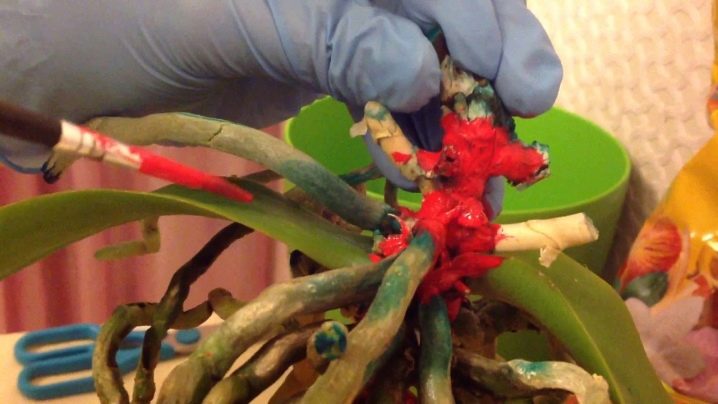
After this treatment, the plants and the change of the substrate produce high-quality watering, and the excess liquid is allowed to drain.
A small part rotted away
It also happens that only a few roots of the orchid have rotted.In this case, it is even easier to revive the plant at home.
The step-by-step process is as follows.
- Mix water and bleach in a 4/1 ratio. The entire instrument that is to be worked is sterilized, but the liquid is not poured out, since after each cut, the secateurs will need to be processed again.
- To cure a flower, you will need to transplant it into another substrate, since the old one is already affected by the fungus. Take out the orchid and clean the roots well, you can rinse them under warm water.
- Cut off infected roots with a sharp knife, pruning shears or scissors.
- Cover the rest of the root system with a fungicide. You can mix 500 ml of isopropyl alcohol and 2 tablespoons of cinnamon powder. Leave the mixture overnight, strain it through a coffee filter and pour into a spray bottle.
- Thoroughly rinse the old pot and sterilize it in a 10% bleach solution (keep in the solution for several hours).
- You may need to treat other flowers from decay with a fungicide. This precaution helps keep the rest of the plants from becoming infected with rot.

The affected plant should always be isolated immediately as soon as root rot is suspected. Some fungal diseases, such as black rot, spread very quickly from one orchid to another.
It is possible to leave infected plants in quarantine until it is clear that the infection has been completely eradicated.
Sometimes the roots of an orchid can become soft and die from overwork. In other cases, they simply outgrow their pot and need a transplant. Once every 2-3 years, it is required to change not only the size of the container, but also the substrate.
All the roots rotted away
It also happens that all the roots of an orchid die. Not every novice flower lover knows that even in this case, it is possible to bring the plant back to life. For this all roots will need to be cut to the root collar, after which a special nutrient solution is prepared for germination. Take about 1 tablespoon of the stimulant for 4.5 liters of water with a temperature of 37-40 degrees.
Fertilizers are not added to the soaking solution, so they will draw water out of the plant. Soak the orchid in the prepared liquid for about an hour or more.
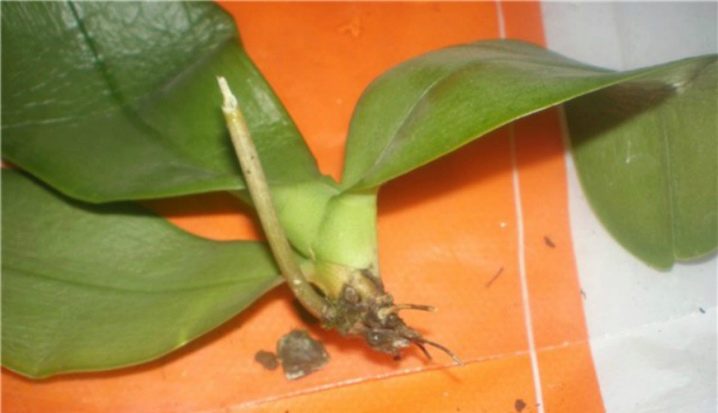
Then they take sphagnum moss, moisten it, place it with the plant in a bag and seal it with a paper clip. If you can't find the moss, you can replace it with a piece of folded paper towel. The plant should be placed in a warm and shady place. These conditions are critical as heat will induce growth and a small amount of light will allow moderate vegetative development of new roots.
After a few weeks, the plant will have a new root system, after which it can be transplanted into the ground.
Leaves suffered
If the orchid has suffered not only the roots, but also the leaves (they have become lethargic, yellow), then it is not easy to preserve it. This part of the plant is the best barometer for him. One glance at the foliage can accurately determine the health of an orchid.
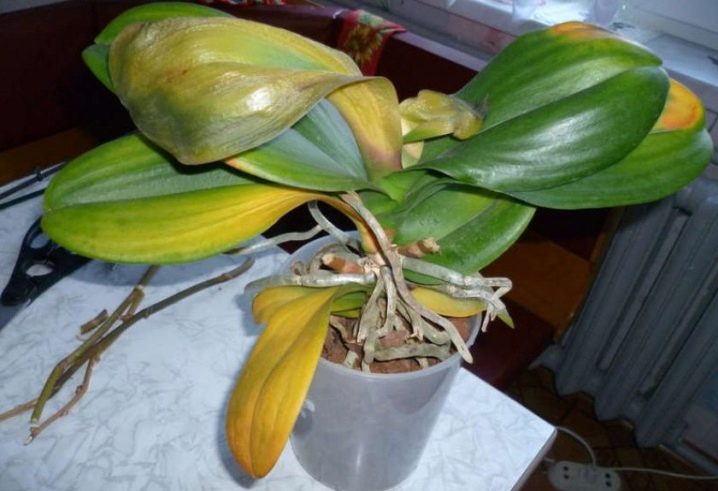
You can revive a flower in water if you cut off the rot and set the plant so that its upper part does not touch moisture.
The best place is where there is ample light. You will definitely need to use nutrient solutions that promote growth activation., and provide greenhouse conditions.
For resuscitation vitamin B is great, since it is he who helps the orchid live, while there is no high-quality root system. A solution with this component can be used not only for soaking, but also for wiping the leaves.
Natural phytohormones are found in growth regulators, they help to develop roots quickly. Phosphorus or potassium supplements in the form of fertilizers can also speed up the process. Some professionals advise using glucose, as it is involved in the formation of new cells.
Do not despair if the roots of the orchid are rotten, flower growers have learned with experience to eliminate the problem even in the most hopeless cases.The beginner also needs to learn this. With a new root system, the flowers will feel great again after a while.
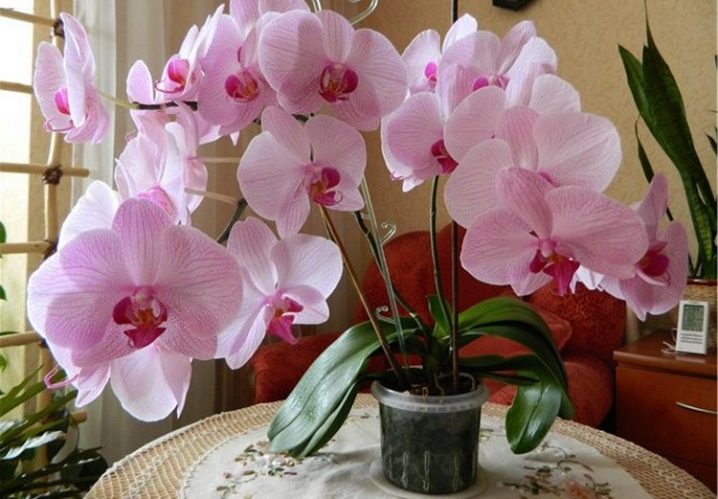































The comment was sent successfully.